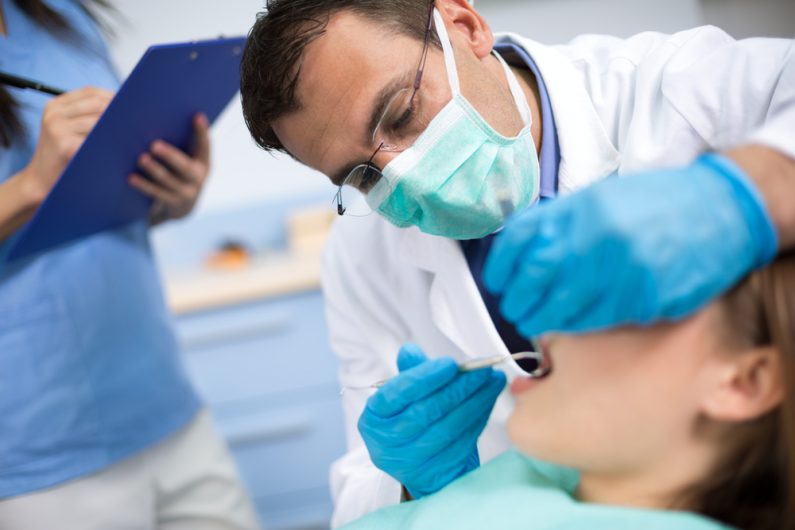If you’re interested in a dental career, there are nine dental branches which you can learn about and specialize in. Like most medical branches, the dentistry has many specific sectors that focus on a particular area of the mouth and teeth or the functionality of the orofacial region.
Each specific sector, you need additional training outside of dental school since each division focuses on individual diagnosis and treatment of the maintenance of oral and dental health care. Learn about the different branches of the dental field has to offer.
- Dental Public Health – known as DPH, specializes in preventing and controlling dental diseases and promoting dental health through community efforts. Although it is not a clinical specialty, people in this division focus on the dental and oral health issues in communities and populations rather than individuals. It’s a division where leadership is provided, policy development, and community-based disease prevention and health promotion. They’re concerned with educating the public on dental health with applied dental research and administration of group dental care programs. You have to have a vast knowledge and set of skills in public health administration, research methodology, prevention and control of oral disease and delivery, and financing of oral health care.
- Endodontics – is the branch which focuses on the dental pulp and tissues surrounding the roots of the tooth. In this branch, you will have to diagnosis tooth pain and perform root canal treatment and other procedures related to the interiority of the tooth. They’re concerned with the physiology and pathology of the dental pulp. When you study endodontics, you become a specialist because there are two or more years of training beyond dental school that you need.
- Oral and Maxillofacial Pathology – also coined as oral pathology, refers to the diseases affecting the mouth, jaws and related structures such as the salivary glands, facial muscles, and perioral skin. It specializes in the pathology that deals with the disease affecting the oral and maxillofacial region through laboratory examination and management. Some of the practices you’ll need to know within this division include researching, diagnosing diseases using clinical, radiographic, or other examinations of the patients.
- Oral and Maxillofacial Radiology – is a discipline concerning the knowledge of taking and interpreting the images and results of medical exams used for the diagnosis and management of disease, disorders, and conditions of the oral and maxillofacial region. You’ll be concerned with the reading and interpreting the radiant energy that is used to examine the craniofacial, dental and adjacent structures. It is part of the radiology branch.
- Oral and Maxillofacial Surgery – is a discipline which is concerned with the surgical treatment of diseases and injuries, in the areas of the head, neck, jaw, and orofacial region. In this division, some of the common practices you’ll be asked to do are a diagnosis, conduct surgical and adjunctive treatment of diseases or injuries that involve the functional and esthetic aspects of the oral and maxillofacial region. Some of the common surgeries performed are tooth extractions, corrective jaw surgery, cleft lip/palate surgery, and reconstructive surgery. To specialize in this branch, you will need to be in four years of a hospital-based residency program.
- Orthodontics and Dentofacial Orthopedics – focuses on the alignment of the teeth and dental arches. In this discipline, you’ll center on the diagnosis, prevention, and correction of malocclusion of the orofacial structures. You will need 2-3 years of orthodontics residency after dental school to become a specialist in this branch.
- Pediatric Dentistry – is an age-defined division. It specializes in providing infants and children up to their adolescence years including those with special health care needs primary and comprehensive preventative and therapeutic oral health care. Dentist in this branch adapts techniques and procedures from general dentistry and specialties to apply to children. They are pediatricians but the dental industry. 2-3 years of specialty training are required after dental school.
- Periodontics – is the division concerned about the supporting and surrounding tissues of the teeth and specializes in the prevention, diagnosis, treatment, and maintenance of the health and function of the tissue. Dentist in this branch focus on the inflammatory disease that destroys gums and its supporting structures. You’ll need three additional years of training after dental school.
- Prosthodontics – is a discipline that focuses on the design and installation of artificial replacements of teeth and artificial parts of the mouth. Practices in this sector include the diagnosis, treatment planning, rehabilitation, and maintenance of the oral function, comfort, and health of the patient’s artificial teeth and parts. They treat patients who are missing teeth, have deficient teeth, or need restoration. Treatment procedures can include crowns, bridges, and dentures. Three years of additional training and education are required to become a specialist in prosthodontics.
The field of dentistry offers many specialties you can further your studies, training, and treatment that can help individual patients or community-based populations with preventative and maintenance of oral and dental health care. Each division can require more training and education than others, but it is a rewarding experience when you see the change and impact you make on a patient. If you could study in any of the nine branches of dentistry, which division would you choose and why tell us in the comments below?








Wow never heard of so many branches of dentistry.Great article!!!